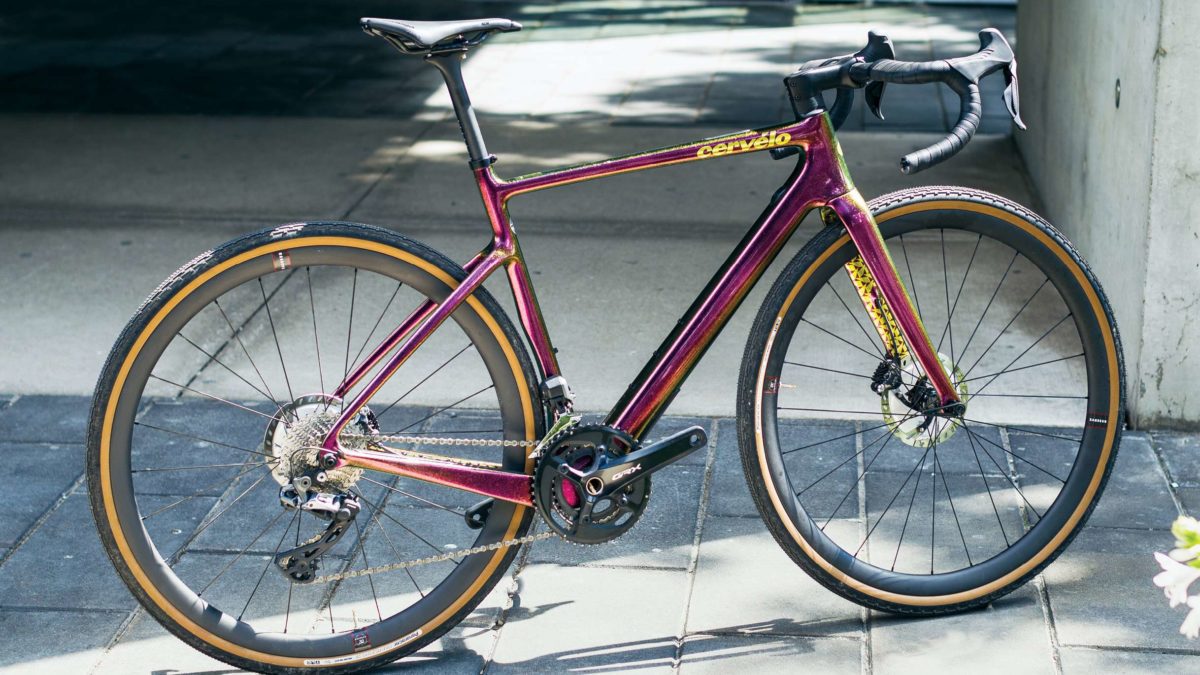Review: Cervélo Áspero-5
Getting faster on rough surfaces and through turbulent air
 Photo by:
Matt Stetson
Photo by:
Matt Stetson
It felt as if the carbon fibre had barely finished curing on Cervélo’s debut Áspero frame, when the company released its follow-up. The first gravel racer came out in 2019. The latest Áspero-5 launched this spring. The time seemed to fly by. The speed at which gravel the gravel category has been evolving also seems breakneck.
The importance of aerodynamics for gravel riding and especially for racing is not so new. I’d say for at least five years, companies have been presenting gear that helps you cut through the wind as you bounce along on 40c tires. Yet, I feel as if these aero gravel products – whether they be frames or wheels – still come with reminders: remember you often have to push a lot of air on gravel, too. Smooth roads aren’t the only places where aerodynamics count.
Cervélo has been making the case, quite successfully, for aero since the ’90s. Its first Áspero has some aerodynamic touches, which the company has boosted with the latest model. The cables are now hidden. In a configuration much like the all-road Caledondia that came out last year, hoses and wires run through Cervélo’s ST32 stem and down the head tube along a channel at the front of the steering tube. With all the new changes, Cervélo says you’ll save 32 g of drag.
A question of speed
The Cervélo’s Áspero-5 is fast, plain and simple. The company focused the bike’s design around speed. If you have the jump for a sprint, it will respond. You’ll want this whip if you aim to be at the front of a race. It’s not built for the bikepacking types. (It is designed to take a top-tube bag, though.) I really like the Áspero’s riding position and responsiveness – almost road-bike-like. The frame lets you maximize your pedalling and your cornering.
At the end of the front fork is the TrailMixer, a feature that came out with the first Áspero. If you orient it so that the wheel’s axle is in a more forward position, you get more responsive steering. Then flip the TrailMixer inserts so the axle is more toward the down tube. The bike becomes more stable, while the steering slows. This ability to adjust the bike’s trail – the distance between the front tire’s contact patch and the steering axis – lets you dial in the handling you’d like as you switch tire widths and even wheel diameters. The frame and fork can accommodate 42c tires on a 700c wheel or 49c tires on a 650b. Flipping the TrailMixer is easy, but afterward you do have to fuss a bit. You have to adjust the position of the front brake caliper. Also, you must be careful when you cinch down the TrailMixer inserts: it’s easy to put them in a little off, making axle insertion and removal tricky. In the end, I preferred to keep the TrailMixer in the forward, more-responsive position for almost all wheel-and-tire combinations.
The bike was a joy to take on roads and even singletrack. I definitely found the traction limits of the 38c Panaracer Gravel King SK tires as I rode in the local Don Valley trails. As a rider, I might be slowing down, but I still get a kick out of the speed a bike like the Cervélo Áspero-5 offers to me.
Cervélo Áspero-5
Components: Shimano GRX 815 Di2, 11–34 tooth cassette, 48/31-tooth crankset, 16-degree flared Cervélo AB09 carbon handlebar
Wheels: Reserve 32
Sizes (cm): 48, 51, 54, 56, 58, 61
Price: $9,100
Website: cervelo.com
